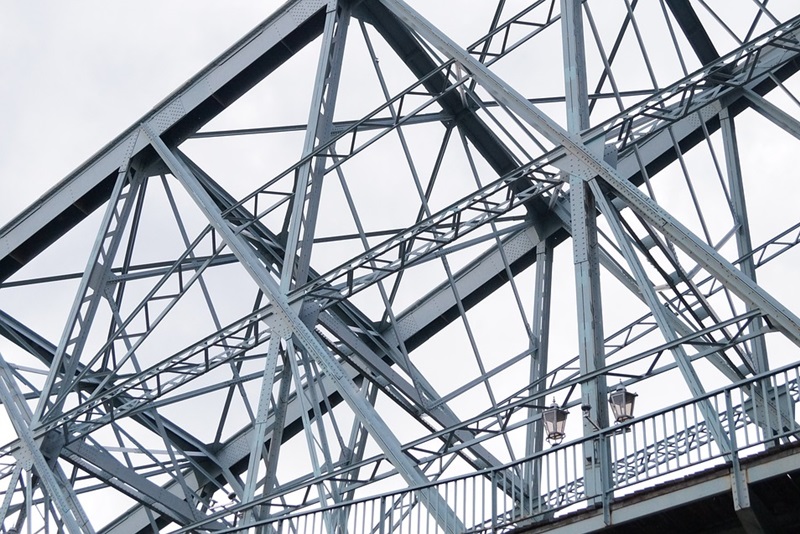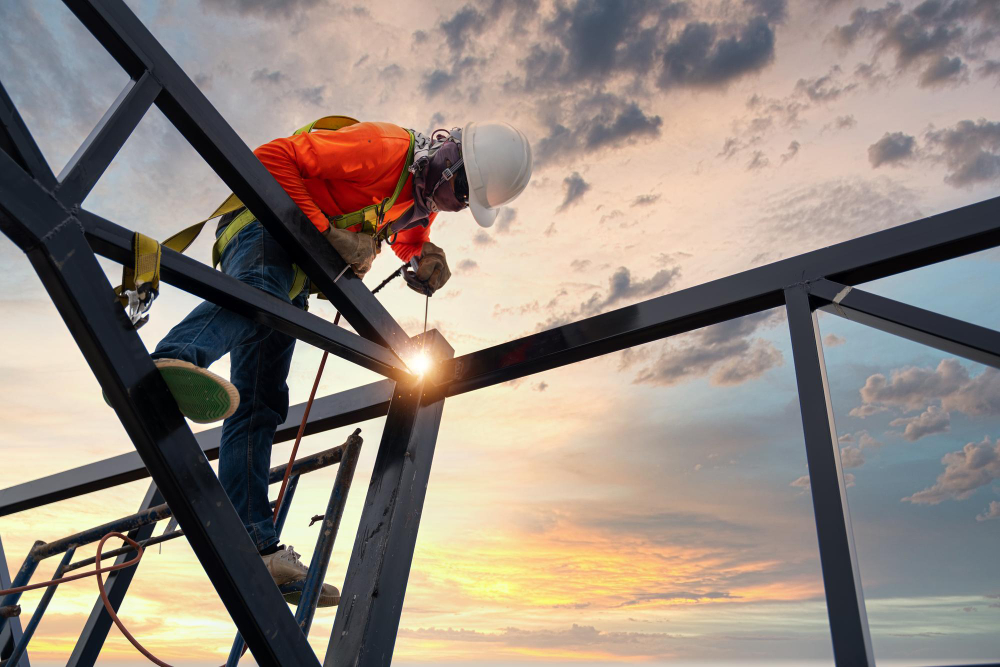Alpha Reo: Blazing A Trail in Reinforced Steel Solutions
Alpha Reo: Blazing A Trail in Reinforced Steel Solutions
Blog Article
Cutting-edge Trends in Steel Fabrication: Enhancing Toughness and Accuracy
In the realm of steel fabrication, the quest of sturdiness and precision has actually brought about a wave of ingenious patterns that are improving the sector. From innovations in welding modern technologies to the assimilation of robot automation in fabrication processes, the landscape of steel manufacturing is evolving rapidly. High-strength alloy development, paired with the utilization of 3D modeling and simulation software, is pushing the borders of what is attainable in terms of structural honesty and accuracy. The expanding focus on lasting practices in steel manufacturing is not only driving performance however additionally promoting a much more ecologically conscious approach to construction. These fads are not simply forming today but additionally laying the foundation for the future of steel construction, guaranteeing further enhancements in toughness and accuracy.
Advanced Welding Technologies
In the world of steel manufacture, the adoption of sophisticated welding technologies has actually substantially transformed the sector's strategy to attaining premium top quality and precision in architectural welds. Advanced welding technologies, such as laser beam welding and friction mix welding, have actually become game-changers in the area. Laser beam welding utilizes a concentrated laser light beam to sign up with steel components with exceptional precision and rate, making it optimal for thin materials and intricate styles. On the other hand, rubbing mix welding develops exceptionally strong bonds by mechanically intermixing the molecules of the products at the joint, getting rid of the demand for melting the steel. These technologies provide many advantages, including reduced heat-affected zones, marginal distortion, and boosted mechanical residential properties in the bonded joints. By leveraging these advanced welding strategies, steel fabricators can elevate the longevity, stamina, and precision of their architectural welds, satisfying the progressively demanding needs of modern-day building and construction jobs.
Robotic Automation in Construction
Embracing robot automation has come to be a cornerstone of modern steel manufacture methods, simplifying processes and improving effectiveness throughout the industry. Robotics are reinventing the way steel components are manufactured, using exceptional accuracy and speed while minimizing human mistake. These automated systems can manage recurring tasks with consistent accuracy, leading to better end products.
One key benefit of robot automation in steel fabrication is the capacity to work around the clock without tiredness, substantially increasing production output. This continuous operation lessens downtime and accelerates task timelines, eventually conserving prices for manufacturers. Furthermore, robots can be configured to perform detailed tasks that may be tough or unsafe for human employees, enhancing security in the workplace.
Additionally, robotic automation allows seamless assimilation with various other digital innovations, such as computer-aided layout (CAD) software application and Web of Things (IoT) systems (steel fixing). This interconnected strategy boosts communication in between various phases of fabrication, maximizing operations and ensuring real-time monitoring and control. As the steel construction industry proceeds to advance, robotic automation sticks out as a transformative force driving efficiency and precision in manufacturing processes

High-Strength Alloy Growth
The development of high-strength alloy advancement in steel construction is reshaping the sector's method to enhancing material longevity and efficiency. High-strength alloys are engineered to show exceptional mechanical homes, such as boosted tensile strength, toughness, and corrosion resistance contrasted to typical steel qualities. By integrating these sophisticated alloys into fabrication processes, makers can create parts that stand up to higher stress and anxiety levels and harsh atmospheres, causing more reputable and long lasting final product.
One key advantage of high-strength alloy growth is the capacity to minimize material thickness without compromising structural stability. This not only leads to lighter-weight elements however additionally contributes to cost savings and boosted performance in fabrication and setting up procedures. The improved strength-to-weight proportion of these alloys permits for the layout and building and construction of structures with higher load-bearing capabilities while lessening total weight.
3D Modeling and Simulation Software Program
Advancements in steel construction processes have actually been significantly driven by the assimilation of advanced go to these guys 3D modeling and simulation software devices. These devices permit makers to produce comprehensive online versions of their tasks, enabling them to envision the last item with precision before any type of physical work begins.

Lasting Practices in Steel Production
Incorporating lasting techniques into steel production processes is vital for lessening ecological influence and ensuring long-lasting source availability. One essential sustainable technique is the adoption of energy-efficient technologies to decrease greenhouse gas discharges throughout the steel manufacturing process. This includes utilizing sustainable power sources, such as solar or wind power, to power steel plants and executing energy-efficient equipment to maximize power use.
Another important aspect of sustainable steel manufacturing is the liable sourcing of raw materials. This entails making sure that the iron ore and various other resources utilized in steelmaking are obtained from moral and ecologically friendly resources. By advertising transparency in the supply chain and sticking to stringent environmental requirements, steel suppliers can minimize the unfavorable influences of source extraction on regional environments and areas.

Final Thought
In final thought, the ingenious fads in steel construction such as innovative welding modern technologies, robot automation, high-strength alloy growth, 3D modeling and simulation software application, and lasting practices are boosting the resilience and precision of steel products. These improvements are changing try this website the steel fabrication market by improving sustainability, quality, and efficiency. It is clear that the future of steel construction depends on welcoming these advanced innovations to fulfill the needs of contemporary building and construction and production industries.
In the world of steel construction, the quest of durability and accuracy has actually led to a wave of innovative patterns that are improving the sector.In the world of steel fabrication, the fostering of innovative welding technologies has substantially revolutionized the sector's method to achieving premium top quality and precision in architectural welds. As the steel manufacture sector proceeds to evolve, robot automation stands out as a transformative force driving efficiency and precision in manufacturing processes.
Furthermore, reusing and reusing steel scrap and waste materials play a substantial function in boosting the sustainability of steel production. steel fixing.In verdict, the innovative patterns in steel fabrication such as advanced welding innovations, robotic automation, high-strength like this alloy development, 3D modeling and simulation software program, and sustainable practices are boosting the resilience and precision of steel products
Report this page